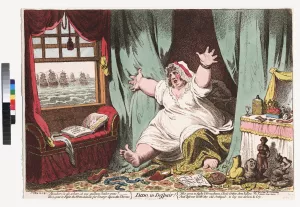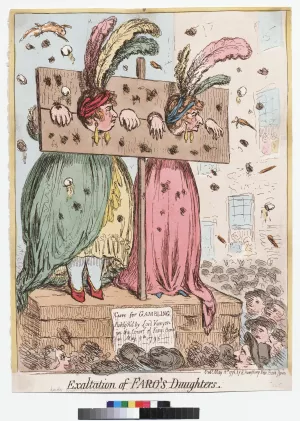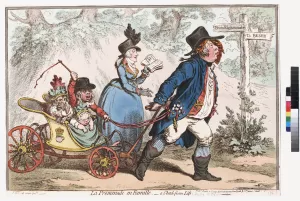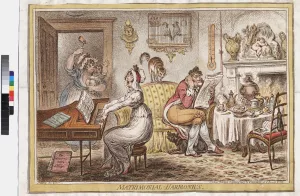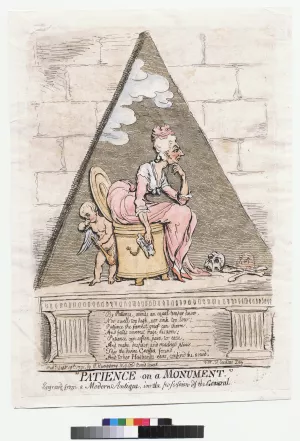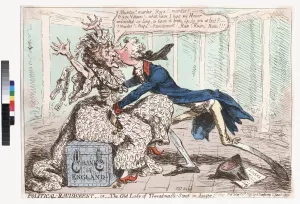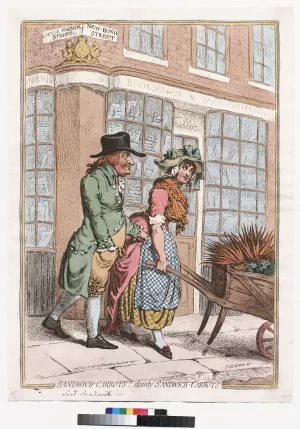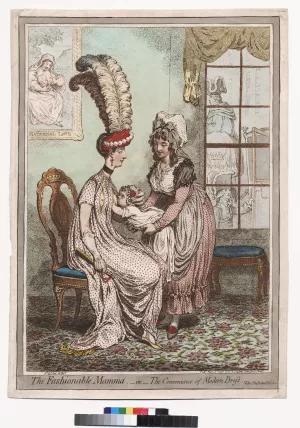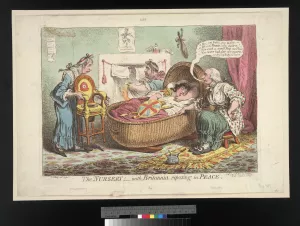This gallery explores how James Gillray’s caricatures of women convey the paradoxical nature of feminine power in Romantic culture. To effect his satire, Gillray utilizes ironic presentations that juxtapose discrepant images, imply a discrepancy between image and word, or create discrepancy by inverting traditional connotations of an image, person, or event. At times this means the irony exists within the frame of the print; at times within the relation between print and viewer; at times within the dialogue between the caricaturist and Romantic aesthetic paradigms; and at times of all these modes operate together. During the height of Gillray’s career in the 1790s, social and economic changes tied to increasing urbanization and foreign wars raised “uneasiness about women’s role in society” (C. McCreery, Satirical Gaze 4): gender ideals were increasingly regimented into public and private spheres. The real woman’s conundrum revolved around her simultaneous subordination to and responsibility for the wider social order. As this gallery illustrates through depictions of power submission, assertion, and manipulation, and as Gillray’s overarching paradox hinges on revelation and coherence via irony and contradiction, the women in his prints elaborate on the Romantic female’s paradoxical expectations. Caricature, expressing its subject and argument through ironic discrepancies, provides an especially apt medium for understanding the problematic separation and interdependence of its female figures’ domestic and social power.

